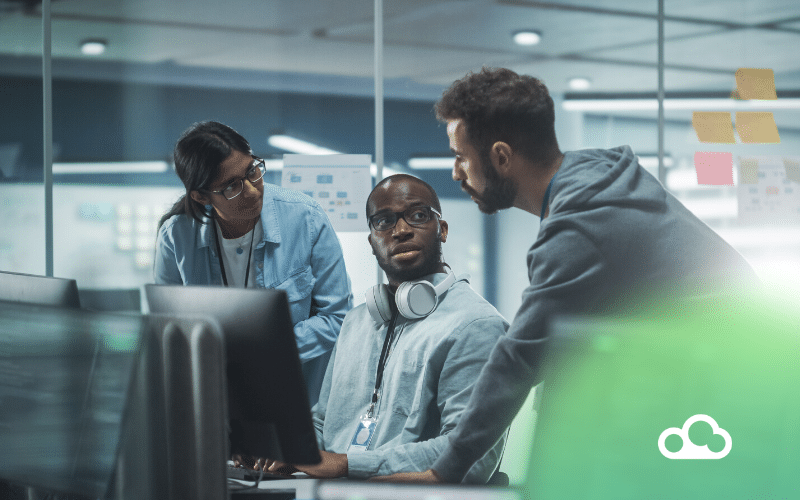Data curation is an indispensable asset for organizations looking to maximize the true value of their data, make data-driven decisions, and stay competitive in an increasingly hostile business market.
Data curation also involves implementing data preservation, access controls, and appropriate documentation and metadata, which all contribute to the overall value and impact of the data. To stay competitive, organizations must prioritize effective data curation as a key strategy. Below is an overview on what data curation entails, how to properly implement it, and some key best practices for your organization.
What is data curation?
Data curation is the process of managing and maintaining data throughout its lifecycle. It involves organizing, structuring, and maintaining data so that it can be easily accessed and used by those who need it. The goal of data curation is to make data more accessible, shareable, and reusable, which can lead to improved decision-making and value creation for businesses.
Data curation aims to ensure that an organization’s data is of high quality, reliable and accessible. This involves identifying and removing inaccuracies, duplicates, or irrelevant data. Additionally, data curation aims to increase the value of data by making it more discoverable and usable. Businesses can make better decisions and create value by properly organizing and structuring data.
How do you set up data curation?
Setting up data curation within an organization involves several steps. The first step is to map the available data meticulously. This mapping will later serve as the basis for data governance. From there, it is important to keep the data continuously updated to maintain its relevance and quality.
Additionally, data should be reused by adding metadata, such as by transforming the files to improve interoperability or by adding links to related data. It’s also important to make the data shareable by making it easy to add data, such as by placing metadata on trusted sites that are easily accessible and usable. Finally, data should be archived by grouping the data, code, and metadata together when necessary.
Effective data curation: Our 7 best tips
Continuously monitor and update data to ensure its relevance and quality
It is important to have a systematic approach to regularly monitor and update the data to maintain its accuracy, relevance, and quality over time. This can be done through automated processes, such as data validation checks, or manual processes, such as regular data audits. Additionally, it is important to have processes in place for responding to feedback from data users to ensure that any errors or inaccuracies are promptly corrected.
Add metadata to improve data discoverability and usability
Metadata is crucial in making data both more discoverable and usable for others. By adding descriptive information about the data, such as its origins, creation date, and any relevant keywords, it becomes easier for others to find and understand the data. Additionally, metadata can provide valuable context for data users, such as information about the data’s limitations, quality, or intended use.
Make data easily shareable by placing metadata on trusted sites
Data repositories or data centers that are widely recognized for their preservation and dissemination services can provide a trusted platform for sharing data and metadata. By depositing data on these sites, data producers can ensure that the data will be preserved for the long term and easily discoverable by others. Furthermore, the use of recognized data repositories can provide assurance to data users about the quality and reliability of the data.
Group data, code, and metadata together when necessary for archiving
To ensure that all the necessary components of a dataset are preserved for the long term, it is important to group data, code, and metadata together when archiving. This helps to ensure that the data can be used and understood in the future, even if the original software or hardware used to produce the data is no longer available.
Appoint a data steward to oversee data curation and governance efforts
Designating a data steward to oversee the data curation process can help to ensure that best practices are followed and that decisions about data governance are made responsibly and consistently. The data steward is responsible for implementing and monitoring data curation processes, responding to feedback from data users, and making decisions about data governance.
Regularly review and assess the data curation process for improvements.
Last but certainly not least, it is important to regularly evaluate the data curation process to identify areas for improvement and to ensure that best practices are being followed. This can be done through internal audits or by seeking feedback from data users. Regularly reviewing and assessing the data curation process can help to ensure that the data remains accurate, relevant, and usable over time.
Conclusion
Curating the right data is an essential part of data management that enables organizations to fully realize the value of their data assets throughout their lifecycle. Businesses can make better decisions and create value by properly organizing and structuring data. Implementing a data curation practice within an organization can improve data quality, make data management and collaborative work easier, and increase the return on investment.
It is also important to follow best practices for data curation and to review and assess the data curation process on a regular basis.
—
Learn even more about using your data as an asset to achieve higher levels of data governance and data quality with DataGalaxy! Book a demo today to get started on your organization’s journey to complete data lifecycle management and begin your first use case in 90 days or less.





